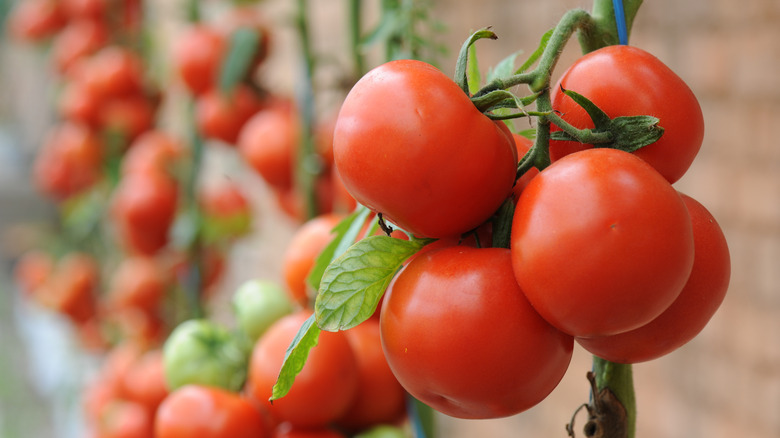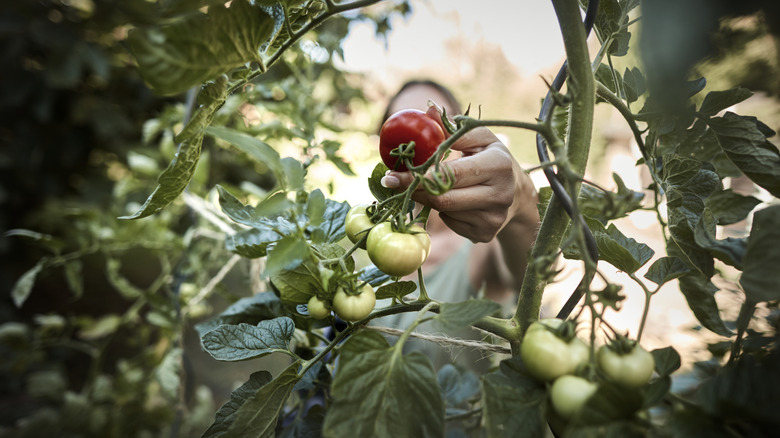Why You Shouldn't Always Prune Your Homegrown Tomato Plants
You've planted the seeds, tended the soil, and been watering your tomato plants just enough for the juiciest fruit this summer. Now your plants are wild, lush, and brimming with the promise of plump, sun-warmed tomatoes. To protect that bounty, you might be tempted to reach for the shears and apply the age-old gardening wisdom said to deliver bigger, better fruit, which is pruning. But here's the thing. You don't always have to prune your homegrown tomato plants.
That's not to say you should avoid it completely. Pruning can be a game-changer, channeling the plant's energy into producing larger, healthier fruit by removing excess foliage and lowering the chances of fungal or bacterial disease. Yet, when it comes to growing tomatoes at home, a crucial factor many gardeners overlook is the variety. Pruning should be guided by the type of tomato plant you're growing.
There are two main types based on growth habit. Determinate types, which grow more like compact bushes, have a set height and don't need much intervention. These produce fruit on a determined number of stems, so pruning them can easily hinder the harvest instead of helping it. If you go in with the shears too often, you risk stressing the plant, stunting its growth, and even reducing yields. Indeterminate varieties, on the other hand, grow like vines. They naturally produce more leaves and stems, and can handle and often benefit from a little strategic trimming.
Knowing when (and when not) to prune homegrown tomato plants
Due to the nature of determinate plants, it's best to avoid pruning them unless absolutely necessary. If you do need to clear a few extra shoots, gently pinch or snap them off by hand. Even with indeterminate tomato plants, there are times you'll want to wait. Start pruning only after flowers have appeared and the suckers are about 2 to 4 inches tall. Suckers are the small shoots that grow at the junction where a leaf meets the main stem of a tomato plant.
If you're pruning in the morning, do so once any form of moisture on the plant has dried. This helps lower the risk of disease spreading. If diseases or pests are a concern, you can also use a few kitchen scraps for your garden tomatoes as an extra layer of protection. Pruning can be useful when you're growing companion plants under your tomatoes and want more sunlight to reach them. In fact, planting the right herb near your tomato plants can help in enhancing the flavor of the fruit, so don't skip on pruning.
When you do choose to prune your homegrown tomato plants, whether because the type calls for it or due to certain concerns, the trick is to go easy. Too much cutting can strip vital foliage and deprive you of the pleasure of getting some fresh, fiery red tomatoes from your own garden, so know when to put down the shears.

